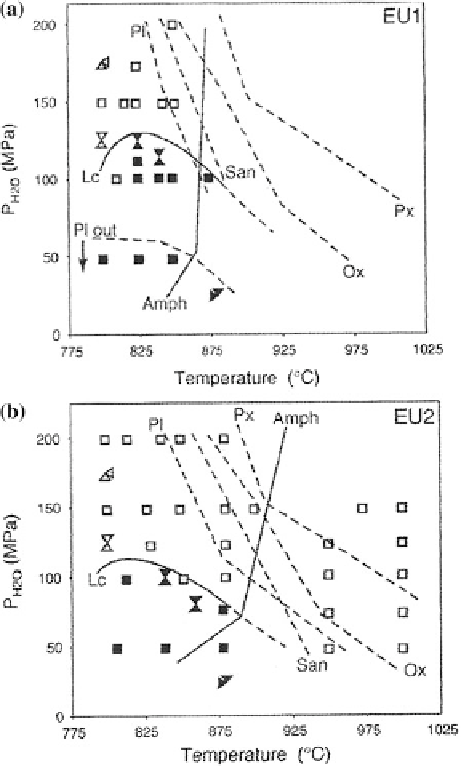Geology Reference
In-Depth Information
Fig. 13.3 a and b phase relations on two samples of a 79 AD Vesuvian lava flow. Px:
cllinopyroxene, San: sanidine, Pl: Plagoclase, Amph: amphibole, Lc: leucite (after Shea et al. 2009)
6KMg
3
AlSi
3
O
10
(OH)
2
+ 4CaMgSi
2
O
6
10Mg
2
SiO
4
+2Ca
2
MgSi
2
O
7
+6KAlSi
2
O
6
+6H
2
O
ð
Þ
ð
Þ
ð
Þ
ð
Þ
ð
Þ
phlogopite
diopside
forsterite
akermanite
leucite
This experimental study suggests that an assemblage consisting of forsterite,
akermanite, and leucite should be stable only at high temperatures and low P (H
2
O),
but would be converted to a phlogopite and pyroxene-bearing assemblage at high
water pressures. The above study, suggests that katungites were formed under
volcanic to subvolcanic conditions, and they are represented at greater depths by
phlogopite pyroxenite, closest equivalent of which is a madupite.

Search WWH ::

Custom Search